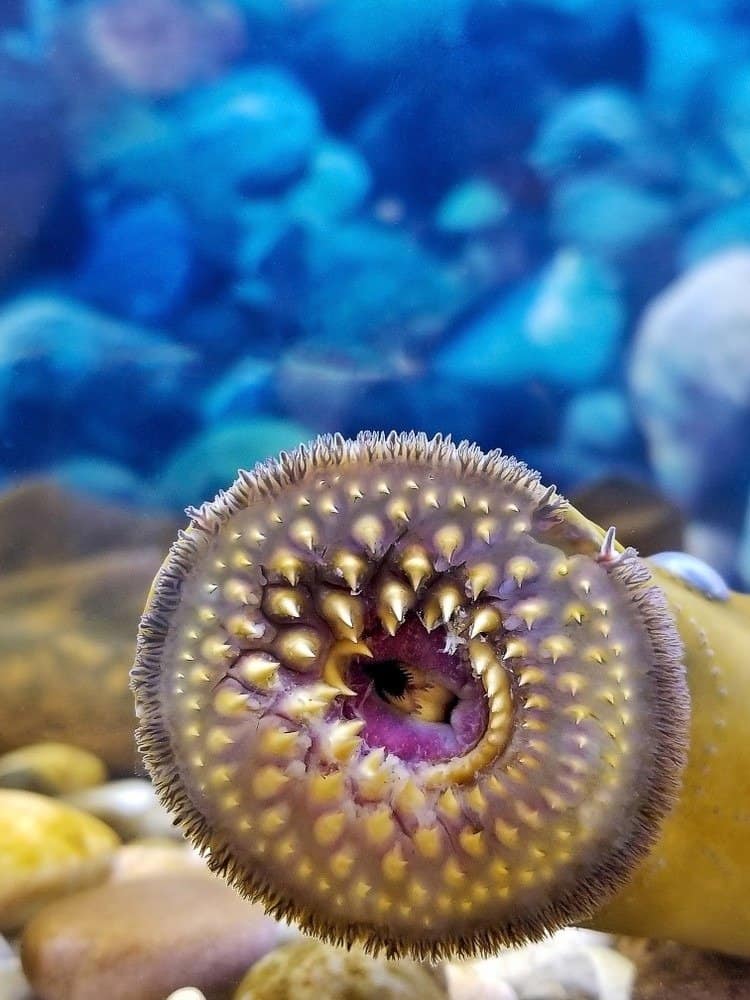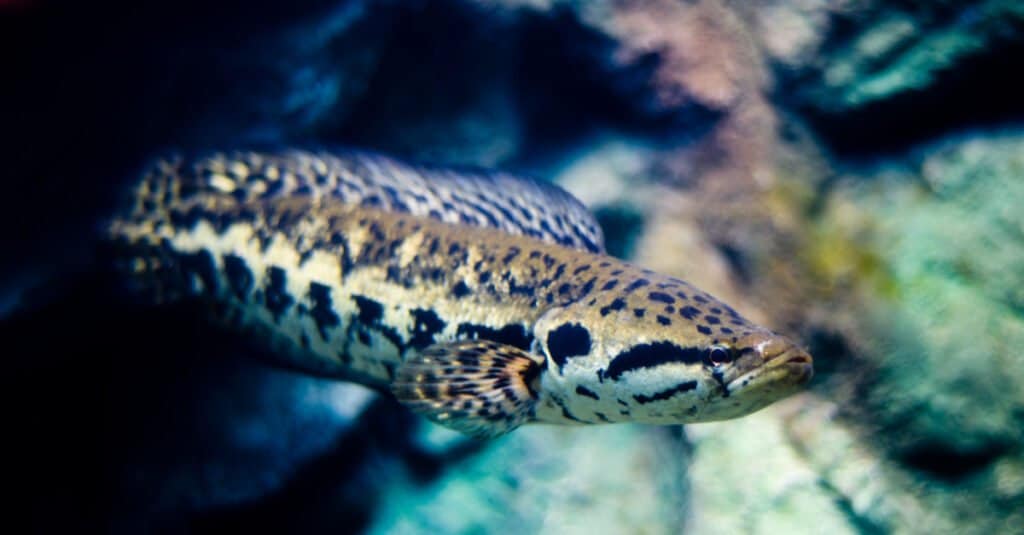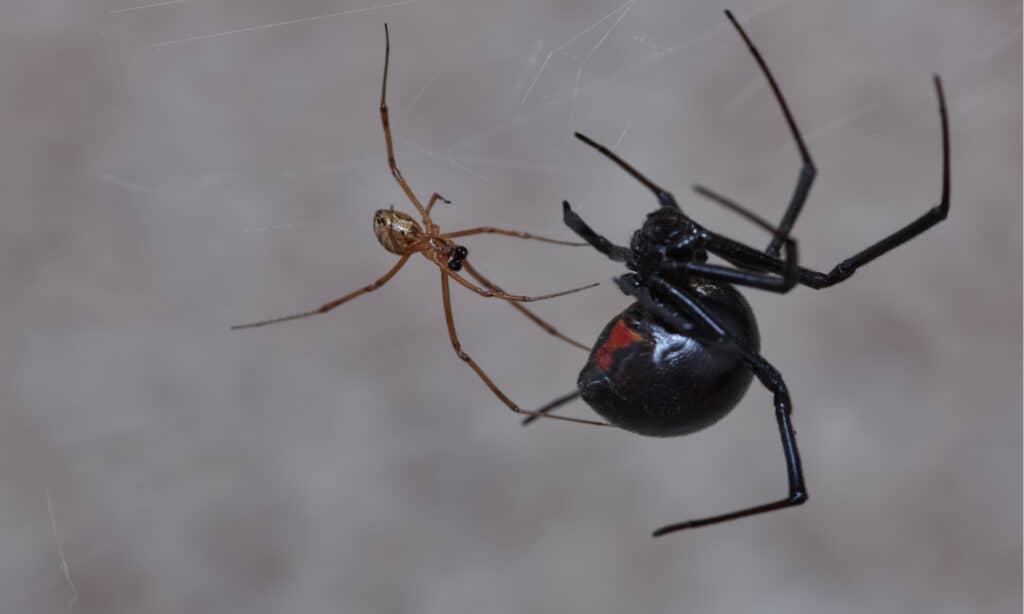Most people think of sharks and jellyfish when discussing dangerous aquatic animals. But what about those found in freshwater? Lakes, rivers, and streams across the country can harbor everything from tiny innocent fish to giant toothy alligators. And due to Michigan’s geographic location among the Great Lakes, this state has plenty of fresh water. Does anything sinister live in the waters around the state? Beware of these five dangerous animals found in Michigan’s lakes and rivers, including where they live and what makes them so threatening.
About Michigan’s Lakes and Rivers

Lake Huron is a large lake that is connected to Lake Michigan.
©EB Adventure Photography/Shutterstock.com
Michigan is a unique state as it contains more freshwater shoreline than any other state in the country. It has 11,000 inland lakes and tens of thousands of rivers. While there are many places for people to enjoy recreation, such as fishing and boating, the vast amount of water also means more wildlife.
Michigan gets its famous shape from four Great Lakes, including Erie, Huron, Superior, and Michigan. But there are also several large inland lakes, such as Lake Houghton, Lake Charlevoix, and Torch Lake. And some of the state’s main rivers include St. Clair, Detroit River, St. Mary’s, The Grand River, and Muskegon River.
With as much water as Michigan holds, there are relatively few animals, even remotely dangerous to humans. The animals on this list live in both rivers and lakes.
1. Sea Lamprey

A sea lamprey features a round, sucker-like mouth with sharp teeth arranged in circular rows.
©Maria Dryfhout/Shutterstock.com
The sea lamprey looks like something out of a science fiction movie. Also known as the vampire fish, the sea lamprey is a parasitic fish native to the Northern Hemisphere. It has an elongated body like an eel. But it features a round, sucker-like mouth with sharp teeth arranged in circular rows. They don’t possess scales, gill covers, or fins. Instead, they breathe through seven tiny openings behind their mouths and eyes. These parasites feed on fish by suctioning their mouths to their prey and grating pieces of tissues with their rough tongues and honed teeth before drinking their blood and fluids.
Sea lampreys are present in the Great Lakes, where they are considered an invasive species, killing off native fish. These creepy fish only feed on cold-blooded organisms, so they do not pose any real threat to humans. However, there have been reports of accidental latching on humans. And their bites can be rather painful, though not life-threatening.
2. Cyanobacteria

When cyanobacteria group in large colonies, they look like floating mats of bluish-green algae.
©NASA Earth Observatory images by Joshua Stevens, using Landsat data from the U.S. Geological Survey. Caption by Kathryn Hansen., Public domain, via Wikimedia Commons – License
Also known as “blue-green algae,” cyanobacteria is not technically an algae but a bacterium. These bacteria are aquatic and photosynthetic and play an important role by generating oxygen in the atmosphere. These organisms are microscopic and can be found in all types of water. When they group in large colonies, they look like floating mats of bluish-green algae. When there is an overgrowth of cyanobacteria, it is called a bloom. During blooms, you may notice scum floating on the surface and a foul rotten smell.
These blooms are common in the Great Lakes, especially in Lake Erie, Saginaw Bay, and Green Bay. Exposure to high amounts of this bacteria can make people, pets, and other animals sick. They make toxins called cyanotoxins, which can cause nausea, diarrhea, vomiting, skin irritation, eye and throat irritation, and trouble breathing.
3. Snapping Turtle

Snapping turtles are known for their powerful jaws and flexible heads and necks.
Turtles may not be the first dangerous animal that comes to mind, but these typically peaceful creatures can become aggressive if they feel threatened. Snapping turtles are large freshwater turtles found throughout most of the eastern half of the United States. This turtle species is known for its powerful jaws and flexible heads and necks. They live throughout Michigan’s lakes and rivers, and you can encounter them on land or water. When in water, they are more likely to swim away and hide in the sediment or under rocks. But on land, they don’t move as fast and are less comfortable.
These turtles don’t come looking for trouble. But they have no problem defending themselves if someone is bothering them. Many people have jokingly stuck their fingers near a snapping turtle’s mouth, only to regret it almost immediately. Their beak-like jaws are powerful enough to puncture and sever human fingers. If you ever need to move a snapping turtle, pick it up from the hind legs and don’t go near its mouth.
4. Northern Snakehead Fish

While rare, bites from snakeheads have been reported.
©Narongchut/Shutterstock.com
The northern snakehead fish is a predatory and aggressive fish native to China. They are long and thin, with a long dorsal fin and a mouth full of teeth. These are different from your typical fish. Snakeheads can move across the land for short distances by wriggling their bodies. These carnivores not only eat other fish, but they will also consume crustaceans, amphibians, and small mammals. While there are no breeding populations established in Michigan, a few loners have been captured in the Great Lakes. Most tend to avoid humans, but they can become aggressive when protecting their eggs. While rare, bites from snakeheads have been reported.
5. Pacu

Piranhas have pointed razor-sharp teeth, whereas the pacu has squarer, straighter teeth that eerily resemble those of humans.
©Artex67/Shutterstock.com
Pacus are relatives of piranhas from South America. Piranhas are known for their razor-sharp teeth, but pacus have square, straight, and human-like teeth. Despite rumors, these fish are not an aggressive species. In fact, many aquarium owners keep them in the same tank as other fish without issue. But they occasionally eat other fish, which is why many areas have declared them invasive. Pacus has a rather unfortunate reputation as having a taste for human testicles. However, these claims have not been proven. While they do occasionally bite people by mistake, this is an infrequent occasion and not life-threatening. Only a few pacu fish have been spotted in Michigan after aquarium owners dumped them in lakes. Two were found in St. Clair and one from Port Huron.
That’s it for dangerous animals found in Michigan’s lakes and rivers! If you’re craving more, check out this article about the most dangerous animals in Michigan.
Honorable Mention—More Dangerous Animals of Michigan

Male and female widow spiders look very different from each other.
©lighTTrace Studio/Shutterstock.com
Widow Spider—Widow spiders are dangerous creatures found in Michigan. They have a distinct black and red coloration and a bulbous abdomen. Their venom is highly toxic and can be fatal if not treated properly. Widow spiders are commonly found in dark, undisturbed areas, such as sheds or garages. You will find them in woodpiles, crevices, and other outdoor areas.
Brown Recluse—Brown recluse spiders are another dangerous creature found in Michigan. They are a tan or light brown color and have a distinctive violin-shaped marking on their backs. Brown recluse spiders are highly venomous, and their bite can cause severe tissue damage and even death if left untreated. They reside in dark, undisturbed areas, such as attics, closets, and basements.
Deer Tick—Deer ticks are small, blood-sucking parasites found in Michigan. They are a reddish-brown color and have a small, flat body. Deer ticks are dangerous because they can spread diseases, including Lyme Disease and Rocky Mountain Spotted Fever. They live in grassy areas, shrubs, and wooded areas.
Fowler’s Toad—Fowler’s toad is a poisonous amphibian found in Michigan. They are a gray-brown color and have a large, round body. Fowler’s toad is poisonous and can be fatal if ingested. They make their homes in damp, grassy areas, such as meadows and marshes.
The photo featured at the top of this post is © iStock.com/Paul Massie Photography
Thank you for reading! Have some feedback for us? Contact the AZ Animals editorial team.






